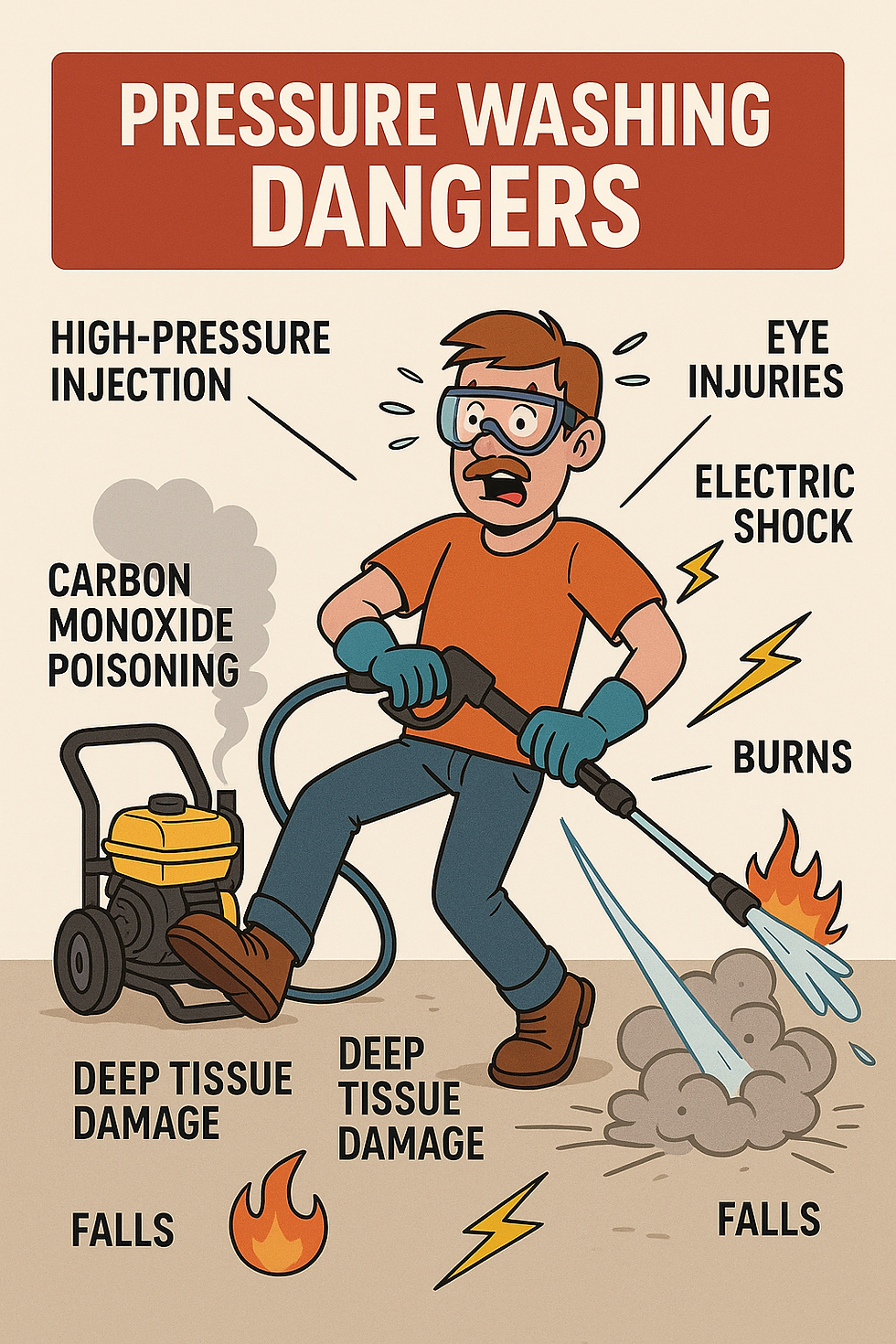Gear Drive vs. Belt Drive Pressure Washers: Understanding the Key Differences
- Trudi Weickum

- Mar 11
- 4 min read
When choosing a pressure washer, one of the most important decisions is selecting between a gear drive and a belt drive system. Both types of pressure washers are designed to handle different cleaning needs, and understanding how they work can help you choose the right machine for your specific application. Let’s take a closer look at the differences between gear drive and belt drive pressure washers, including how they function, their efficiency, durability, and overall performance.

What is a Gear Drive Pressure Washer?
A gear drive pressure washer uses gears to transfer power directly from the engine or motor to the pump. This design creates a highly efficient and powerful cleaning system that excels in commercial and heavy-duty applications.

✅ How Gear Drive Pressure Washers Work
The engine or motor is connected to a gear reduction system.
The gears rotate, directly transferring power to the pump.
This direct connection minimizes energy loss and increases overall efficiency.
🚀 Advantages of Gear Drive Pressure Washers
Higher Efficiency
Gear drive systems minimize power loss during transmission, which allows the washer to deliver more consistent and powerful pressure. This makes them ideal for heavy-duty cleaning tasks where high pressure and flow rates are required.
Increased Durability
Gear drives have fewer moving parts compared to belt drive systems. With fewer components to wear out or break, gear drive pressure washers tend to last longer and require less maintenance.
Higher Performance
Because of the direct power transfer, gear drive pressure washers can handle higher pressure and flow rates, making them perfect for industrial use and tackling tough stains, grease, and grime.
Compact Design
Gear drive systems are generally more compact and lighter than belt drive systems, which makes them easier to transport and store.
❌ Disadvantages of Gear Drive Pressure Washers
Vibration and Noise – Direct gear-to-pump contact can create more vibration and noise during operation.
Initial Cost – Gear drive pressure washers tend to have a higher upfront cost due to their more complex engineering.
What is a Belt Drive Pressure Washer?
A belt drive pressure washer uses a belt and pulley system to transfer power from the engine or motor to the pump. This design reduces wear on the pump by lowering the pump's speed and absorbing vibration, making it a popular choice for contractors and frequent-use situations.
✅ How Belt Drive Pressure Washers Work
The engine or motor spins a pulley connected to a belt.
The belt transfers power to another pulley attached to the pump.
The belt system acts as a cushion, reducing stress on the pump and other components.
🚀 Advantages of Belt Drive Pressure Washers
Reduced Vibration and Noise
The belt absorbs vibration, which reduces stress on the pump and other components. This makes belt drive washers quieter and smoother to operate.
Extended Pump Life
Since the pump operates at a lower RPM (revolutions per minute), belt drive pressure washers experience less wear and tear, leading to a longer lifespan for the pump.
Better for Long-Term Use
Belt drive pressure washers are designed for daily use and longer run times without overheating or causing excessive strain on the system.
Easier on Components
The cushioning effect of the belt reduces stress on the pump, bearings, and seals, which can lower maintenance costs over time.
❌ Disadvantages of Belt Drive Pressure Washers
Power Loss – Some power is lost due to slippage or stretching of the belt over time, which can reduce overall efficiency.
Maintenance – Belts wear out and need to be replaced periodically. Misaligned belts can also cause uneven wear and reduce performance.
Larger and Heavier – Belt drive systems are bulkier and heavier, which can make them more challenging to transport and store.
Gear Drive vs. Belt Drive – Which One Should You Choose?
Both gear drive and belt drive pressure washers offer distinct benefits depending on your cleaning needs and how frequently you plan to use the machine. Here’s a quick comparison to help you decide:
Feature | Gear Drive Pressure Washer | Belt Drive Pressure Washer |
Efficiency | Higher efficiency due to direct power transfer | Some power loss due to belt slippage |
Durability | Fewer moving parts = longer lifespan | Pump operates at lower RPM = extended pump life |
Noise and Vibration | Louder with more vibration | Quieter and smoother operation |
Maintenance | Less frequent maintenance required | Belts need to be replaced periodically |
Best Use | Heavy-duty commercial and industrial cleaning | Regular use for contractors and long cleaning sessions |
Summary
If you need a pressure washer for heavy-duty, high-pressure jobs or frequent commercial use, a gear drive pressure washer is likely the better option due to its higher efficiency, durability, and direct power transfer. On the other hand, if you value smooth operation, quieter performance, and longer pump life, a belt drive pressure washer is the way to go.
Understanding the differences between gear drive and belt drive pressure washers will help you make an informed decision and get the best results for your cleaning projects. Whether you're tackling industrial-strength grime or managing a busy power washing business, the right pressure washer will make all the difference!








Comments